Ryne Sandberg, Cubs Hall of Famer, dies at 65 after cancer recurrence
Published in Baseball
CHICAGO — Ryne Sandberg, a Hall of Fame second baseman who redefined the position with a rare blend of power, speed and defense during his 15-year Chicago Cubs career, died Monday at age 65.
He passed away surrounded by family at his home in Illinois, the Cubs announced.
Sandberg battled metastatic prostate cancer and disclosed his diagnosis in January 2024. He shared news of his remission in August, but four months later, he provided an update that the cancer had returned and spread to other organs, prompting more intensive treatment.
Through it all, Sandberg said he felt the outpouring of love from fans.
“The support has been tremendously overwhelming right from the first week, and it’s continued throughout,” he told the Chicago Tribune in June 2024. “It’s just been incredible and I think that’s been as much medicine to me as anything really.”
In his last public message to Cubs fans on social media July 16, Sandberg shared he had endured a challenging few months of treatment.
“While I am continuing to fight, I’m looking forward to making the most of every day with my loving family and friends,” he wrote. “I haven’t been to Wrigley Field as much as I hoped in the first half but I’m watching every game and am excited to see Wrigley rocking like 1984!”
Known simply as “Ryno,” Sandberg developed into one of the game’s best all-around players. The 1984 National League MVP won nine Gold Glove and seven Silver Slugger awards, earned 10 All-Star Game appearances and finished fourth in MVP voting in 1989 and 1990.
His breakout 1984 season — a .314 average, 19 home runs, 36 doubles, 19 triples, 84 RBIs, 114 runs and 32 stolen bases — fueled the Cubs to the NL East title, ending a 38-year postseason drought. They lost the NL Championship Series in five games to the San Diego Padres, falling one win short of their first World Series appearance since 1945. The Cubs made only one more playoff appearance with Sandberg on the roster, in 1989.
“The Sandberg Game” on June 23, 1984, became the defining moment of his storied career. He hit game-tying home runs in the ninth and 10th innings off St. Louis Cardinals closer Bruce Sutter in an eventual 11-inning Cubs win at Wrigley Field. The Cubs unveiled a statue of Sandberg on monument row at Gallagher Way in 2024 on the 40th anniversary of that memorable game.
“So very few games have a name,” broadcaster Bob Costas, who called the game for NBC, told the Tribune in 2024. “This was a signature game of what turned out to be a Hall of Fame career.”
When he retired, Sandberg owned the record for most home runs by a second baseman with 277; he’s now third on the all-time list. In 16 seasons, Sandberg hit .285 with 282 home runs and 1,061 RBIs in 2,164 games. His 68.1 wins above replacement rank third in Cubs history behind Cap Anson (84.8) and Ron Santo (72.2).
Sandberg hit 25 home runs or more six times, including a career-high 40 in 1990, and had back-to-back 100-RBI seasons in ’90 and ’91. His 344 steals rank fourth on the Cubs’ all-time list.
But it was Sandberg’s stellar defense, coupled with that power and speed, that set him apart and immortalized his name among the game’s all-time greats. His statue at Gallagher Way depicts Sandberg, sporting his flip-down sunglasses flipped up, in a slight defensive crouch while awaiting the next pitch.
He chose to be remembered for his glove instead of his bat.
“Some of the things I wanted on the statue was being on the balls of the feet, being ready for every single pitch,” Sandberg told reporters after the statue dedication. “My defense was very important for me. For me, it was ‘Bring your glove every single day.’ You might go into some hitting slumps, but as far as defense goes, as long as I did my pregame work, I wanted to play defense every day for the pitcher, for everybody on the field.”
Born on Sept. 18, 1959, in Spokane, Wash., Sandberg was a three-sport athlete in high school. He earned All-State honors in basketball, averaging 18 points a game as a guard, and was a Division I football recruit who was named to Parade Magazine’s Prep All-America Team, receiving scholarship offers from Nebraska and Oklahoma before signing a letter of intent to play quarterback at Washington State. The Philadelphia Phillies drafted him in the 20th round in 1978, and he chose to pursue baseball.
“I didn’t know what I wanted to study, I couldn’t picture myself working indoors, sitting behind a desk,” Sandberg told the Tribune in March 1984 of bypassing college. “Plus, I was told I could have a longer career in baseball.
“I never thought it was a mistake to decide on baseball instead of football and college. But I thought it was going to be a long, hard road. They say the odds are that only one or two guys in A-ball will ever make it to the big leagues.”
He began his career as a shortstop, working through the Phillies minor-league system over the next four years, and got his initial taste of the majors as a September call-up in 1981. Sandberg appeared in 13 games for the Phillies and recorded just six plate appearances, with his first MLB hit coming on a single at Wrigley Field.
Sandberg was 22 and playing winter ball in Venezuela when he learned the Phillies included him in a January 1982 trade to the Cubs centered around dealing five-time All-Star and two-time Gold Glove winner Larry Bowa for shortstop Iván de Jesús.
The Phillies, unwilling to give Bowa a contract extension, looked to move on from the 35-year-old shortstop, though Bowa’s 10-and-5 rights allowed him to reject any trade. The Cubs became an appealing destination for Bowa because of two people in the organization: former Phillies manager and then-Cubs general manager Dallas Green and former Phillies coach and then-Cubs manager Lee Elia.
Green wanted Sandberg included in the deal. He credited Cubs scouting director and former Phillies scout Gordon Goldsberry for hounding him not to make the trade unless Sandberg was part of it. Green described it as “pulling teeth” to get the Phillies to say yes on Sandberg.
“I offered everybody else in the organization,” Phillies GM Paul Owens later said of the trade, according to Rob Neyer’s “Big Book of Baseball Blunders.” “It went around and around and around. I tried all the young players.”
“We knew we had them over a barrel,” Green said in the Phillies book “The Good, The Bad & The Ugly” by Todd Zolecki. “(Team President Bill) Giles had already made the mistake of telling the world Bowa was gone. I kept saying, ‘Since we were the Little Sisters of the Poor, we had to get a plus in the trade.’”
A 1 for 32 start to his 1982 rookie season didn’t derail Sandberg. The rebuilding Cubs stuck with the young infielder and continued to give him ample playing time. Two years later, Sandberg made his first of 10 consecutive All-Star Games and won the NL MVP award, getting all but two of the first-place votes. He credited manager Jim Frey, who took over before the 1984 season, for helping him refine his offensive approach and tap into more power.
The trade turned into one of the most lopsided deals in big-league history.
“It didn’t take too long for that trade to not look so good, obviously,” Sandberg said five years ago. “But at the time, I felt like I was a minor-league player and was given an opportunity to get to the major leagues somewhere else.”
Whether his journey to enshrinement in Cooperstown still would have happened if he weren’t traded, Sandberg, reminiscing in 2020, said: “It’s almost hard to imagine that I would have, I can say that very comfortably. For me, the Hall of Fame career, everything just fell into place.”
With Bowa locked in as their shortstop after the trade, the Cubs shifted Sandberg off his natural position and used him as their everyday third baseman for most of the 1982 season. As the season progressed, the organization wanted to figure out its future infield. Second baseman Bump Wills was set to become a free agent in the offseason, and third baseman Pat Taber played well enough at Triple-A Iowa to earn a call-up. Elia gave Junior Kennedy a look at second in July and August and then in September tried Sandberg at the position, where he held his own, posting a .993 fielding percentage in 24 starts.
Sandberg described the position change as a difficult transition given how comfortable he had felt playing third.
“I don’t think you’re going to see the stellar second base play (by Sandberg) that you saw at third for a while,” Green said on Sept. 4, 1982. “Ask anyone who’s moved from third or short to second base — that’s a tough move. But we might as well move him now than wait until spring training.”
The Cubs kept Sandberg at second base permanently following the 1982 season. Bowa reported to the team’s complex in early February before spring training for the duo to get a 10-day head start on building the double-play partnership with Sandberg, who lived in Arizona year-round.
“He’s smooth,” Bowa said in March 1983. “He’s a good athlete and looks more sure of himself this year. Last year he was torn between where he was going to play. It has to ease his mind knowing he’ll be at second base all year.”
Sandberg promptly won a Gold Glove award in 1983. His nine Gold Gloves were the most by a second baseman at the time of his retirement since Rawlings created the award in 1957. It remains the record for NL second basemen.
Competing in the daytime Home Run Derby during the 1990 All-Star Game festivities at Wrigley Field — the first time the Midsummer Classic had been held at the Friendly Confines since 1962 — Sandberg’s three home runs beat the rest of the eight-player field. The other hitters combined for two home runs in the event, which from 1985-90 featured two innings with five outs to hit as many homers as possible.
As one of the top all-around players in the game, Sandberg became the highest-paid player in baseball at the time by signing a four-year, $28.4 million extension before the 1992 season that paid him $7.1 million annually.
He announced his surprising midseason retirement at age 34 on June 13, 1994, citing frustration with his physical ability and offensive production. At that time, Sandberg was hitting .238, 51 points below his career average, with five home runs and 24 RBIs in 57 games and was in the midst of a 1 for 28 slump.
“I am not the type of person who leaves my game at the ballpark feeling comfortable that my future is set regardless of my performance,” Sandberg said that day. “And I’m certainly not the type of person who can ask the Cubs organization and Chicago Cubs fans to pay my salary when I am not happy with my mental approach and performance.”
But after being away from the game for a season and a half, Sandberg came out of retirement after the 1995 season. During his time away, he and his wife of 16 years divorced and he remarried. Sandberg and Margaret would have celebrated their 30th wedding anniversary on Aug. 19.
“I missed being at Wrigley Field, being in front of the fans and really being a part of the team and having fun. That’s what I’m going back for. I’m looking forward to it,” Sandberg told the Tribune after announcing his comeback in November 1995. “I was a baseball player, I am still a baseball player. I don’t think it really left me. … I did the retirement thing and I did the summer activities. I think it just got to the point that now is the time to go back and play baseball.”
Sandberg played two more years before his playing career ended for good after the 1997 season. He earned induction into the Baseball Hall of Fame in 2005.
During his memorable Hall of Fame speech, Sandberg preached the importance of respect — for teammates, coaches and the game — and doing the little things right. The theme of his speech notably came within the shadows of the steroid era.
“When did it become OK for someone to hit home runs and forget how to play the rest of the game?” he said. “These guys sitting up here (other Hall of Famers) did not pave the way for the rest of us so the players could swing for the fences every time up and forget how to move a runner over to third. It’s disrespectful to them and to you and to the game of baseball that we all played growing up.
“If this validates anything, it’s that learning how to bunt and hit-and-run and turning two is more important than knowing where to find the little red light on the dugout camera.”
One month later, on Aug. 28, 2005, the Cubs retired Sandberg’s No. 23, making him the fourth player in franchise history to have his number retired, joining Ernie Banks, Billy Williams and Santo. Greg Maddux and Ferguson Jenkins were added in 2009. (Jackie Robinson’s No. 42 is retired throughout the major leagues.)
Ten years after leaving the game, Sandberg’s desire to become a big-league manager took him back to the minors.
His journey began when the Cubs named him manager of the Class A Peoria Chiefs for the 2007 season. After two seasons with the Chiefs, he earned a promotion to manage the Double-A Tennessee Smokies (2009) and Triple-A Iowa Cubs (2010).
“I look at this as a stepping stone, so one day I can manage in the major leagues,” Sandberg told the Tribune after he was hired to lead Peoria. “This is the start of what I need to do to prepare myself.
“I’ll be talking to the players about my passion for the game of baseball and playing the game the right way. I have no doubt they’ll be all ears.”
Sandberg departed the organization after Mike Quade was hired for the Cubs managerial vacancy following the 2010 season to replace the retiring Lou Piniella.
General manager Jim Hendry said in 2010 he was “very cognizant” of Cubs fans hoping to see Sandberg take over the big-league team.
“You do what’s best for the organization. At the end, we couldn’t have had a bad choice,” Hendry said then. “That’s what made it hard for me. Forget about how great a player (Sandberg) was. I have a lot of respect for Ryne, and I get along very well with him.”
Still pursuing his major-league managerial dream, Sandberg returned to the Phillies organization as their Triple-A manager and guided the Lehigh Valley IronPigs to their first playoff appearance and the International League championship series in 2011, resulting in Baseball America naming him its minor-league manager of the year.
The Phillies promoted Sandberg to their big-league staff as third-base coach for the 2013 season, then named him interim manager when they fired Charlie Manuel on Aug. 16, 2013. Sandberg did well enough in the role over the ensuing month to have the interim label removed and was given a three-year contract.
Sandberg became only the third Hall of Famer in the modern era to manage in the big leagues, joining Frank Robinson and Tony Perez, though the latter never spent a day managing in the minors.
“You don’t see a guy of his baseball caliber come up through the minor leagues and spend a lot of time on a lot of buses,” Phillies second baseman Chase Utley said when Sandberg had the interim tag removed. “To get this opportunity is pretty cool.”
Sandberg had a difficult task managing an aging core with which the Phillies front office was trying to eke out another playoff run under his guidance, five years removed from their back-to-back World Series appearances in 2008-09. In June 2015, just 1 1/2 years in, he resigned as the Phillies sat in last place in the NL East with the worst record in the majors. Those losses took their toll on Sandberg, who finished with a 119-159 MLB managerial record.
His resignation stunned the Phillies. Sandberg, always known for his charismatic smile, fought back tears while explaining why he stepped down. He called his time in Philadelphia “a dream opportunity” to put on the Phillies uniform again, creating complicated feelings when he made the difficult decision.
However, Sandberg understood the reality of his situation and anticipated his fate once the season ended with a new front office set to take over.
“I do not like to lose. I hate to lose,” Sandberg said that day. “That was the biggest thing that weighed on me. In a lot of ways I’m old-school, and I’m very much dissatisfied with the record and not pleased with the fact. That goes hand-in-hand with being a manager.”
Sandberg was known for how well he worked with younger players when he managed in the minors. Those strengths were often neutralized while leading a veteran Phillies team as the organization tried to stave off an ultimately unavoidable rebuild.
“Without gaining on the process, without having the young players in there and working with some that are the future, we got stuck running in mud there and it was not successful and it was not any fun,” Sandberg said when reflecting on his departure a year later.
The Cubs brought him back into the organization in 2016 as an ambassador. He threw out the ceremonial first pitch before Game 5 of the World Series at Wrigley Field. Sandberg made sure to soak in the team’s first Fall Classic since 1945.
“The hype of the whole city and seeing everyone come together as one for the Cubs, it’s something else,” he said. “It’s something I hadn’t witnessed before, so it’s great to be here up close and personal and knowing the players and knowing everybody that’s doing the work and involved with them. It’s great to be a part of it.”
Sandberg was a regular presence around Cubs camp during spring training, including making an appearance this year after being away in 2024 while undergoing treatment.
He is survived by his wife, Margaret, his children, Justin (Ashley), Lindsey (Adam), Steven (Megan), BR (Katie) and Adriane and his 11 grandchildren.
The Sandberg family has asked that donations be made in remembrance of Ryne to Cubs Charities. The Cubs will commemorate Sandberg the rest of the season with a special jersey patch.
____
©2025 Chicago Tribune. Visit at chicagotribune.com. Distributed by Tribune Content Agency, LLC.
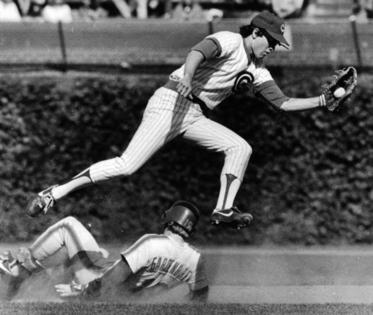
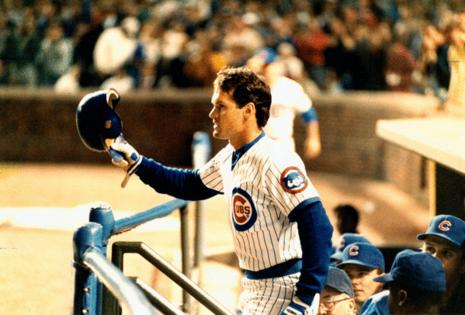
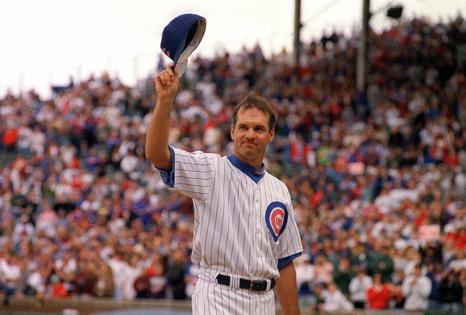

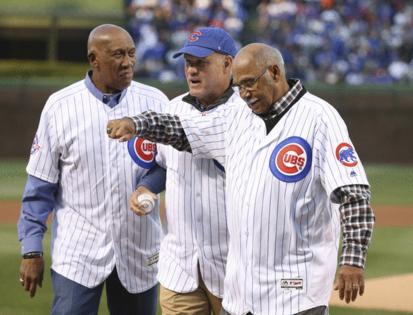





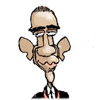


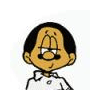

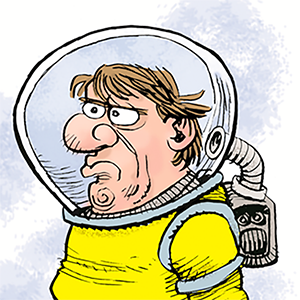
Comments